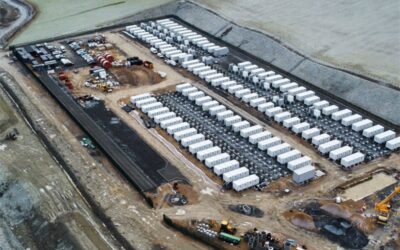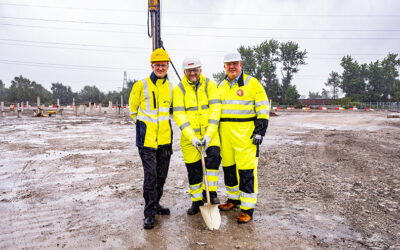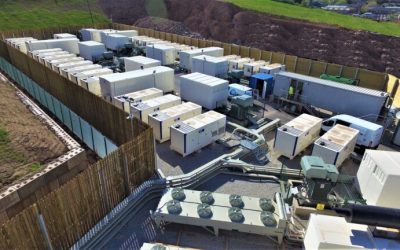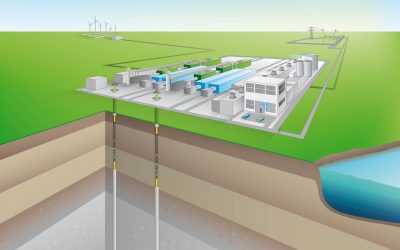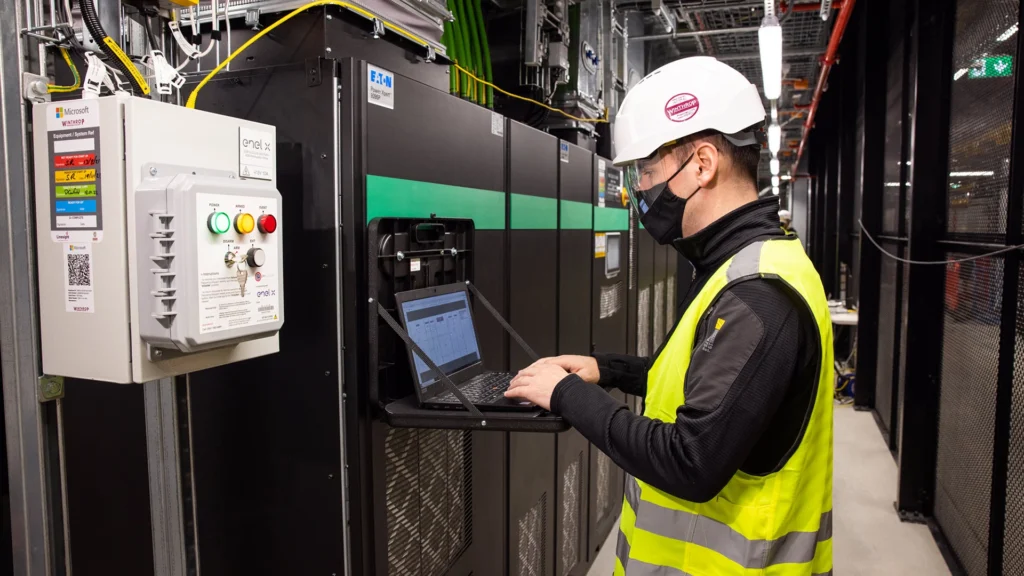
A project to equip a Microsoft data centre with a ‘grid-interactive’ battery storage system shows “what is possible,” an energy and sustainability manager at the company has said.
Dr Christoph Mazur, senior programme manager at the software giant spoke about Microsoft’s retrofit of a lithium-ion battery energy storage system (BESS) at its site in Dublin, Ireland, today at the Energy Storage Summit EU in London.
Enjoy 12 months of exclusive analysis
- Regular insight and analysis of the industry’s biggest developments
- In-depth interviews with the industry’s leading figures
- Annual digital subscription to the PV Tech Power journal
- Discounts on Solar Media’s portfolio of events, in-person and virtual
Or continue reading this article for free
Most data centres today, including Microsoft’s, use diesel generators to provide backup to their uninterruptible power systems (UPS), along with lead acid batteries. In its retrofit project, Microsoft contracted Enel X to instead install a smart lithium-ion (Li-ion) BESS to replace the lead acid, and reduce the site’s reliance on diesel.
As reported by Energy-Storage.news last July, as well as backing up the data centre’s critical loads, the batteries simultaneously serve the Irish electrical grid by delivering frequency regulation services under grid and wholesale market operator EirGrid’s DS3 grid services market.
Microsoft has become increasingly aware of its impact on the energy network as a large consumer of power, Mazur said, and the example of how the Dublin facility’s energy use can be smartly managed is applicable “everywhere,” he said.
In light of the rapid and continuing growth of renewable energy on the Irish grid, and Microsoft’s own commitments to decarbonisation, the company asked itself if those data centre assets could be used to also solve the problem the grid is facing.
Tony Whittle managing director for Enel X UK & Ireland spoke about how thermal power plants have traditionally delivered grid-balancing ancillary services like frequency regulation. With an increasing proportion of renewable energy on the grid, the need for those services grows, and the base of centralised power generators to deliver them is being eroded.
Not only that, Whittle said, but the actual frequency management piece becomes more complex with the growth of variable wind and solar generation, and batteries can do it better than thermal power plants.
The old paradigm of frequency regulation could be compared to switching a light on and off as fluctuations in supply versus demand occur, whereas today, “it’s more like a dimmer switch,” Whittle said, which lithium-ion battery storage equipped with smart controls can do.
It’s a complex application – for the data centre project, power management group Eaton developed a UPS solution that could guarantee the simultaneous protection of critical loads while playing into the DS3, tracking data at 12 millisecond intervals.
Market rules need adaptation for project to be replicated
Microsoft wants to replicate the project at its other data centres, but there is a challenge in that, as Enel X’s Tony Whittle said at the two-day Summit hosted by Energy-Storage.news’ publisher Solar Media, the particular circumstances of the Irish market and the project lent themselves to very well.
Ireland’s targeting of 70% renewable energy on an island grid means there is an urgent need for balancing, and EirGrid is open to distributed assets like the UPS delivering grid services via DS3, while Microsoft’s data centre site and the available technologies fit the purpose perfectly.
Enel X believes there are opportunities for both retrofits and new installations, and the Dublin project proves it. The UK’s Dynamic Containment frequency response market, if opened up to participation from a wider set of assets, could be one such example, Whittle said.
Dr Christoph Mazur of Microsoft said that in the company’s conversations with utilities around the world, it already brings up the project as a case study of what is possible for data centres in grid-balancing markets, using it as a starting point to ask, “can we participate in those markets and work with you to adapt market design to accommodate [it]”?


